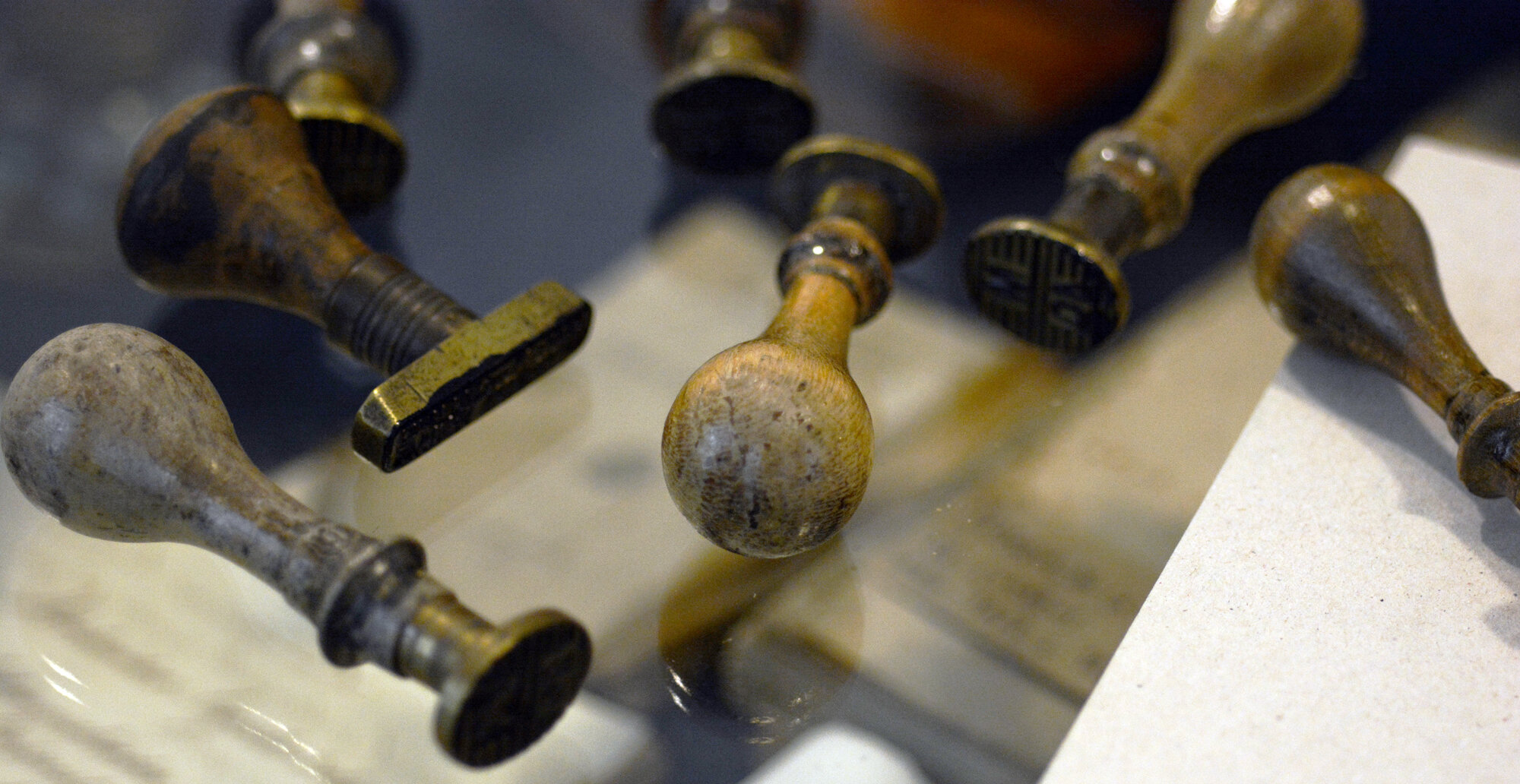
Una visita al Museo Postal · A visit to the Postal Museum
El interés en la filatelia generó una visita al Museo Postal con el objetivo de descubrir para luego fotografiar elementos gráficos de su acervo que no sean sellos postales.
La intención de la búsqueda se orientó a elementos que utilizó el Correo como herramientas de comunicación en donde se destacan los matasellos y los fechadores. El matasello es la marca que se aplica sobre un sello postal como distintivo de haber sido empleado con el fin de impedir su reutilización. Los fechadores, como su nombre lo indica, se utilizaron para indicar la fecha de entrada o salida de un paquete de la oficina de correos.
El atractivo hacia estas piezas nace por el uso de la tipografía. Primeramente, la fascinación hacia el trabajo de elaboración del sello el cual requiere un dibujo para la creación de una matriz para fundir el bronce y obtener el diseño deseado. Por otro lado, el diseño en sí mismo en donde líneas o figuras geométricas son sumadas al lenguaje escrito para transmitir un mensaje codificado en un espacio pequeño.
Las imágenes se reflejaron para una mejor observación.
The interest in philately generated a visit to the Postal Museum with the objective of discovering and then photographing graphic elements of its collection that are not postage stamps.
The intention of the search was oriented to elements that the post system used as communication tools where postmarks and date stamps stand out. Postmarks are the mark that is applied on a postage stamp as having been used in order to prevent its reuse. Daters, as the name implies, were used to indicate the date of entry or exit from an office.
The appeal to these pieces is born from the use of typography. Firstly, the fascination towards the stamp making work which requires a drawing to create a matrix to melt the bronze and obtain the desired design. On the other hand, the design itself where lines or geometric shapes were added to the written language to convey a coded message in a small space.
Images were mirrored for a better observation.

































